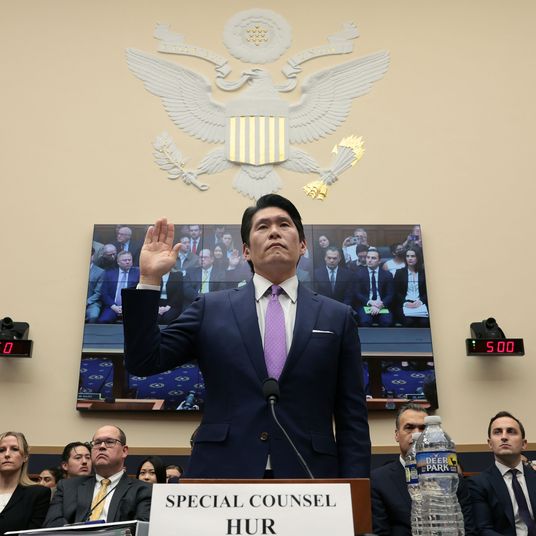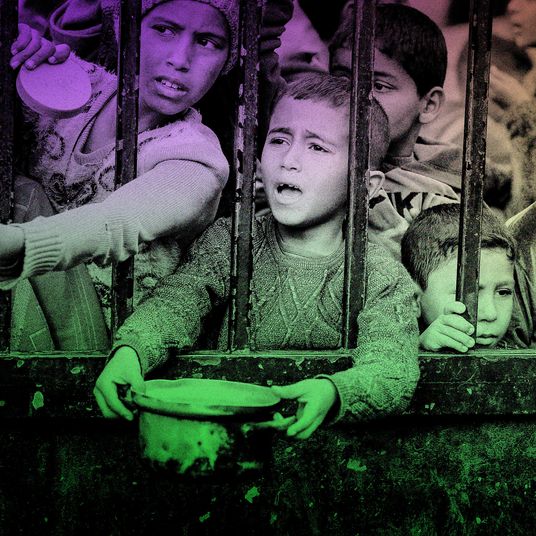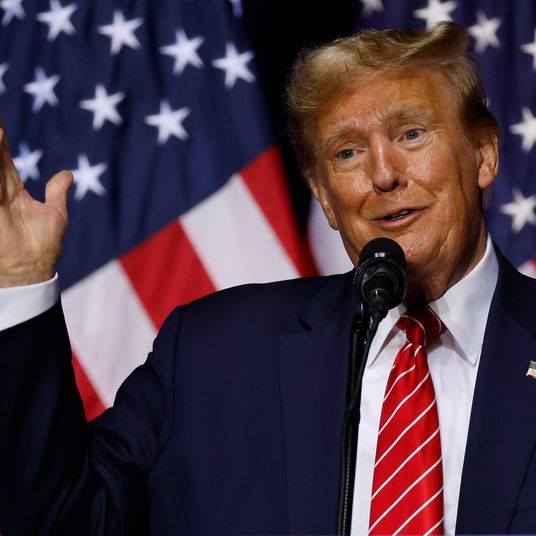Target this week said it would shutter nine stores across four states due to theft and organized retail crime, the latest big-box retailer to signal that it’s losing the war against shoplifters. The company said it made the decision out of concern for the safety of its employees and guests. “During the first five months of this year, our stores saw a 120 percent increase in theft incidents involving violence or threats of violence,” CEO Brian Cornell said during an earnings call last month.
Among the locations slated for closure in October is the Target store on 118th Street in East Harlem, which was perfectly calm on Thursday morning. Halloween decorations were aglow, the Rowing Blazers x Target collab was on display, and body wash was safely locked away behind plexiglass. “It seems well stocked in there,” said Diane Dowling, who dropped by in the hopes of finding a going-out-of-business sale (there was none). Dowling, like many New York residents, wondered about the logic of Target’s decision to shutter the East Harlem location while moving forward with plans to open new locations in the Bronx, Chelsea, Union Square, Kings Plaza in Brooklyn, and on 125th Street, just a mile and a half from the lame-duck location in East Harlem. “Why are you opening a new Target if this one is being robbed? You think that one is not going to be robbed too? I don’t understand.”
Dowling’s confusion is understandable. Reliable data on shoplifting is extremely difficult to come by, and the numbers that are available tell only part of the story. Target, like other retailers, doesn’t provide in-depth data on theft, but during an earnings call in May, Cornell said “shrink” — a catchall figure that includes merchandise stolen by both employees and the general public, lost to processing errors, or seemingly evaporated without explanation — would eat away at his company’s profitability by more than $500 million compared to last year. On Tuesday, the National Retail Federation, one of the few groups with access to big-box stores’ data on theft, released its annual security survey that estimated companies lost $112 billion to shrink in 2022.
But shrink can be misleading. While the NRF’s $112 billion figure is up from $93.9 billion in 2021, it’s only a slight uptick as a percentage of sales and it’s in line with analysts’ expectations. Yet that number was cited in news reports — coupled with images of teenagers looting stores like Apple and T-Mobile in Philadelphia — that described a “crime wave” or a “shoplifting epidemic.”
“I think there is a theft problem that has to be recognized, but I think there is a bit of a bandwagon effect,” said Neil Saunders, managing director of GlobalData. “Once one retailer discusses shrink, it becomes a buzzword, and then investors start asking questions about it, so other executives on calls start addressing it. It’s very difficult to detect whether the reason for closing a store is solely down to theft or whether it’s a combination of factors. It could be, for example, that in a particular location they don’t get the footfall or that people don’t just don’t buy as much stuff at that store to make it viable.”
Target’s closures were just the latest in a series of setbacks for the company that go far beyond shrink. In August, executives delivered a grim outlook to shareholders, saying the company had missed quarterly sales expectations as shoppers pulled back due to inflation and a right-wing backlash from its sale of Pride merchandise in June. Total revenue dropped 5 percent over the prior year, and the company cut its profit expectations for 2023. (Target hadn’t mentioned theft on earnings calls in its two-decade history until last year, when it raised shrink as a problem amid profit losses caused by markdowns while trying to unload excess merchandise, according to CNBC.)
Still, Saunders said that if a publicly traded company like Target is blaming theft for store closures, it’s probably more true than not. “They can’t just make things up. If they started doing that, and investors started probing, they could be in quite a lot of trouble.” And Target isn’t alone — Walgreens, CVS, Walmart, Whole Foods, and others have closed stores in major cities, and many have cited theft or, in the case of Nordstrom’s San Francisco location, the “dynamics of the downtown” market.
It’s unclear how market dynamics in East Harlem affected Target’s decision to close the store, and the company didn’t respond to a request for comment on why it had chosen to close that specific location. But Nicole Mobley, a local resident who has been shopping at the Target since it opened in 2010, was among the shoppers lamenting its closure on Thursday. “It’s sad for the neighborhood,” Mobley said while wheeling a cartful of groceries on Thursday. “I’m going to miss this. I loved coming to this store.”


























